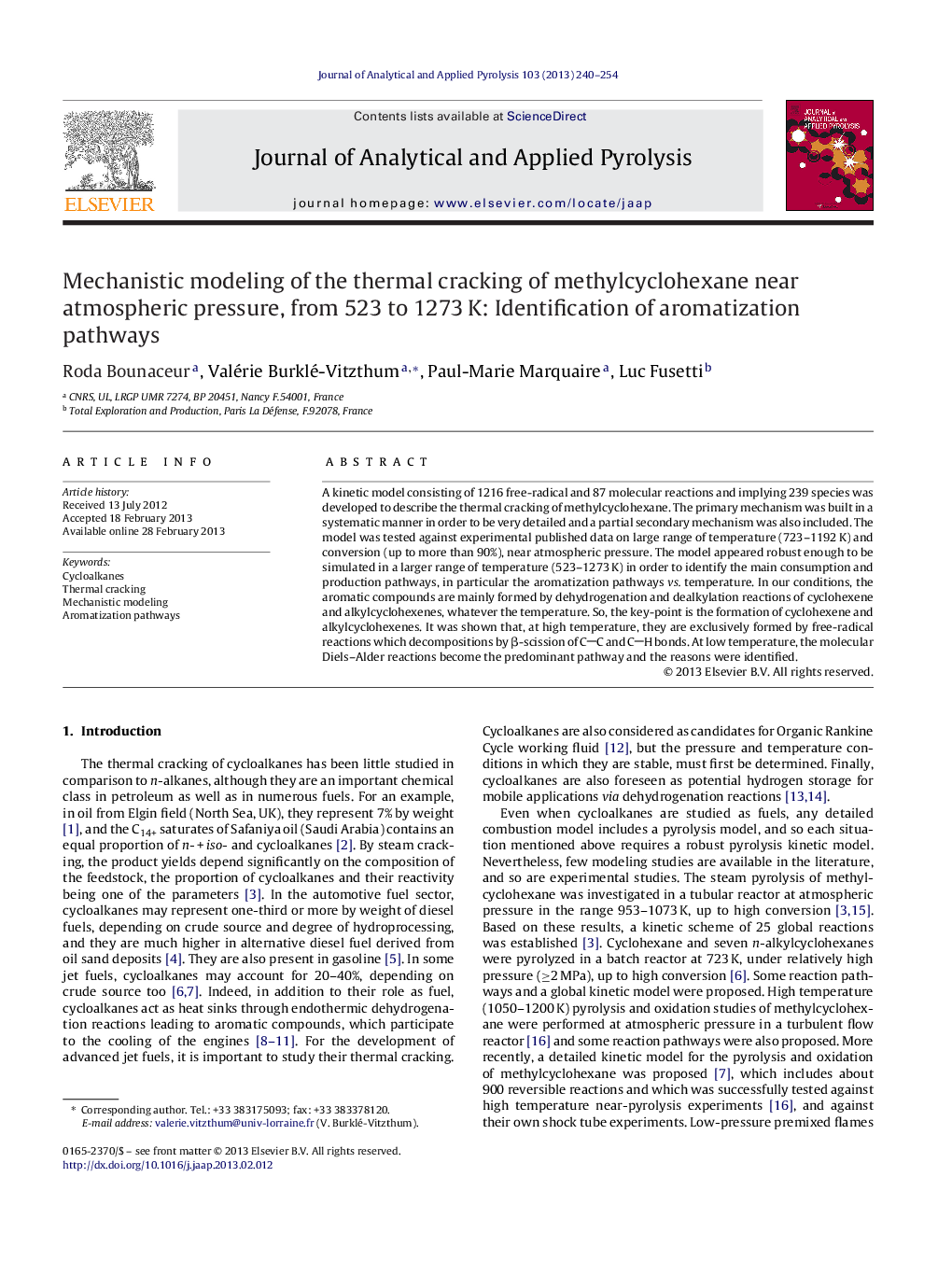| Article ID | Journal | Published Year | Pages | File Type |
|---|---|---|---|---|
| 1197194 | Journal of Analytical and Applied Pyrolysis | 2013 | 15 Pages |
A kinetic model consisting of 1216 free-radical and 87 molecular reactions and implying 239 species was developed to describe the thermal cracking of methylcyclohexane. The primary mechanism was built in a systematic manner in order to be very detailed and a partial secondary mechanism was also included. The model was tested against experimental published data on large range of temperature (723–1192 K) and conversion (up to more than 90%), near atmospheric pressure. The model appeared robust enough to be simulated in a larger range of temperature (523–1273 K) in order to identify the main consumption and production pathways, in particular the aromatization pathways vs. temperature. In our conditions, the aromatic compounds are mainly formed by dehydrogenation and dealkylation reactions of cyclohexene and alkylcyclohexenes, whatever the temperature. So, the key-point is the formation of cyclohexene and alkylcyclohexenes. It was shown that, at high temperature, they are exclusively formed by free-radical reactions which decompositions by β-scission of CC and CH bonds. At low temperature, the molecular Diels–Alder reactions become the predominant pathway and the reasons were identified.
► A detailed kinetic model of methylcyclohexane thermal cracking is proposed. ► It is constructed on the basis of more than 1200 free-radical and molecular reactions. ► It is validated on a large range of temperature (723–1173 K), near atmospheric pressure. ► The aromatization occurs via dehydrogenation reactions of cyclohexene and alkylcyclohexenes. ► Cyclohexene and alkylcyclohexenes are formed by decompositions at high temperature and by Diels–Alder reactions at low temperature.
